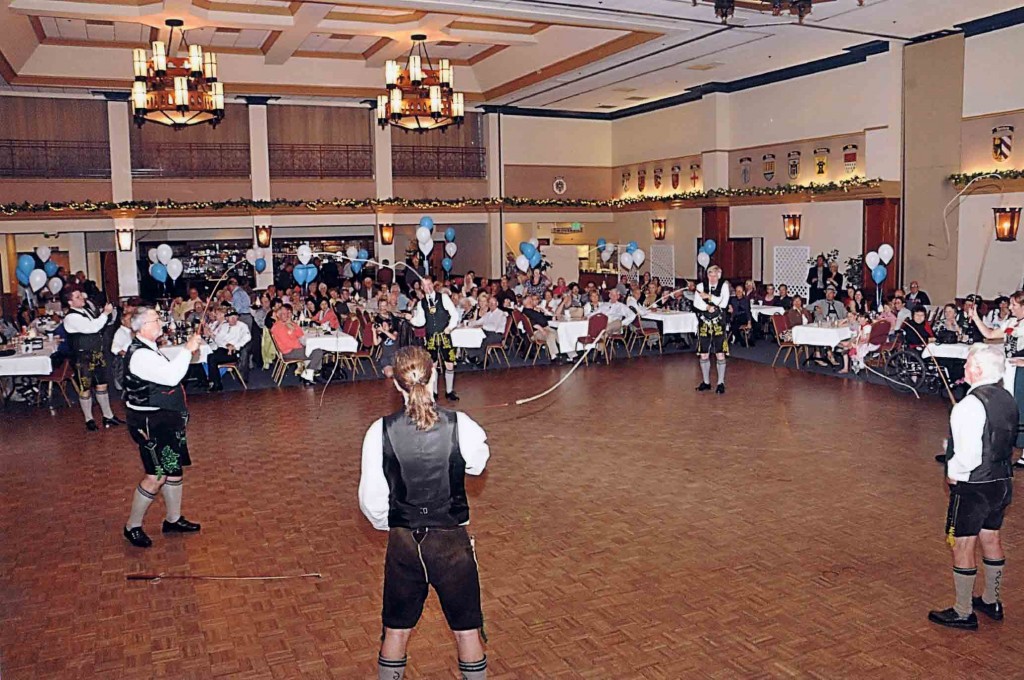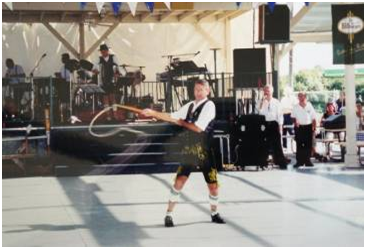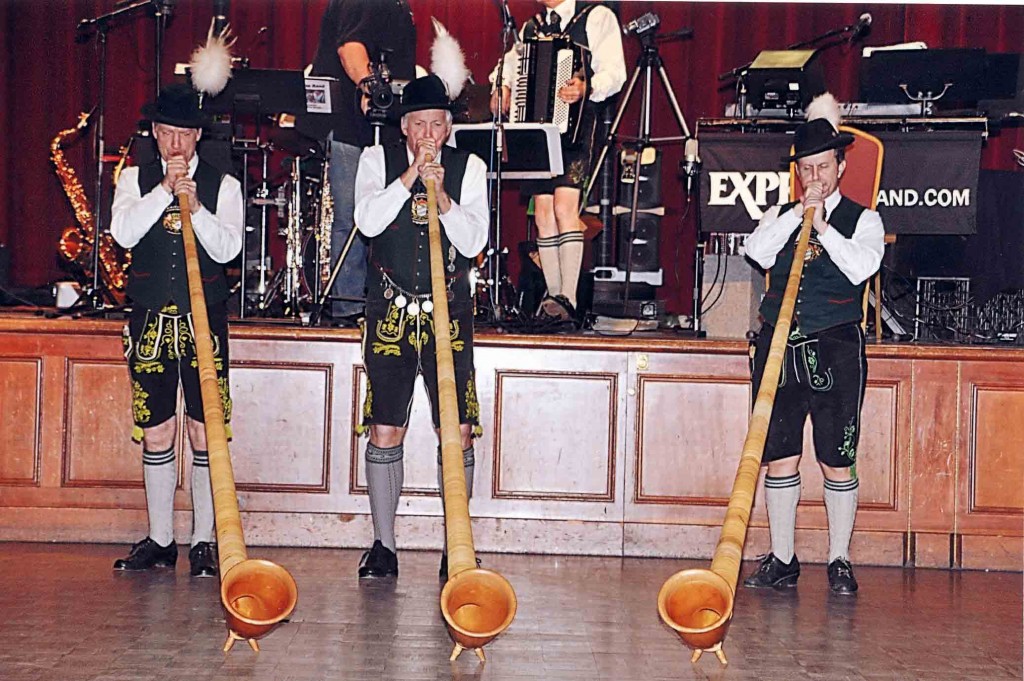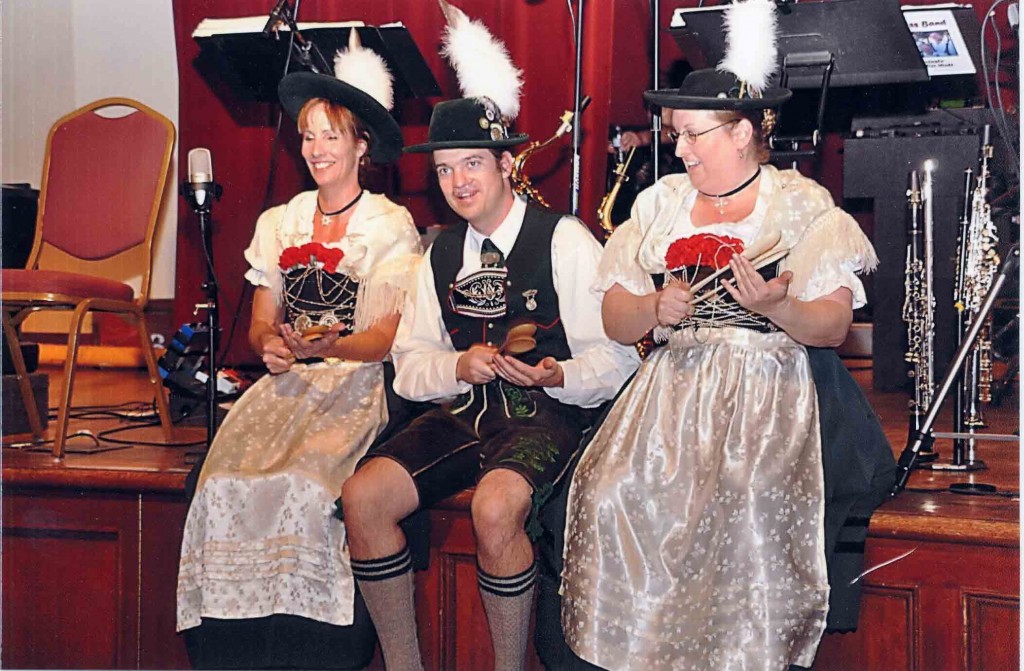Goaßlschnalzn, Alpenhorn, Aperschnalzen, Löffel
The archaeological record of the Alphorn stretches back nearly two thousand years to the Celtic tribes that originally settled the rugged land on the northern slopes of the Alps. Since ancient times the Alphorn has sounded as a part of the daily activities of the shepherds and cowherds of these mountain people. The Alphorn was used to calm the dairy cows at milking time. It was the twilight signal for the flocks of sheep to settle in for the night as the shepherds exchanged rustic melodies across the valleys.
Such melodies became ritual signals for “All is Well in the Valley” and were passed down through countless generations, from shepherd father to shepherd son. The sound of the Alphorn called the people to gather for council and the men to gather for war. Even the brooding rock walls of the Alps seemed to echo approval to the sound of the Alphorn. Long beloved by the people of Switzerland, Rocky Mountain Alphorns now brings nature’s perfect horn to North America. The Alphorn design is simple: A hollow tube, carefully carved out of spruce wood to time tested dimensions. This is an instrument that is built for sound; mellow and reverberant.
The notes of the Alphorn are tuned by nature to a scale of unique beauty, with a range of musical expression over three full octaves that is astonishing to the uninitiate. Although known for long and arching phrases of a pastoral nature, the Alphorn is also capable of displays of spectacular virtuosity in the hands of a very few players. Watch us perform!
Goaßl oder Aperschnalzn
The Goasslschnoizen (Whip-Wielding) is a Bavarian custom, which was practiced by horse-drawn wagon drivers. The Whip (Goassl) consists of a wooden rod (a), a twisted cord (B) and tip (C). The momentum of the whip causes the tip to exceed the speed of sound , thus producing the “crack”. Whips are used as a means of communication with the horses, urging then to move and react to commands. However, the horses are never touched.

Many wagon drivers developed their own recognition signal, which serves to identify them near and far. Since different whip snapping sequences require not only strength but a sense of tempo, contests developed in order to determine the best whip-wielders (Schnoiza). Although few people today drive horse-drawn wagons , the customs of the Goasslschnoizens (Whip-Wielders) remain and are still exhibited at birthdays, weddings and at beer fests. Their performance is often accompanied by a well-known Bavarian melody that is usually played with the accordion. In earlier times when there were many horse-drawn wagons it was illegal to practice Goasslschnoizen (Whip-Wielding) on the main thoroughfares. Such infractions were punished with a hefty fine which could be as high as a months wages. However, since several court decisions now recognize the Goasslschnoizen as an official form of cultural expression, such complaints of disturbing the peace are now rejected. Watch us perform!
Aperschnalzen (aper = free of snow), tradition involving the rhythmic snapping and cracking of a whip up to 5 m in length (called “Goaßl” in dialect); takes place at the end of January and early February every 3rd year on a predetermined date in a town in the Flachgau region of the province of Salzburg and in between in the neighbouring Bavarian Rupertiwinkel region. The whip-cracking is performed in small groups (“Passen”) of 9 members each; 60-70 of these
 groups usually take part in the “Schnalzen” competitions (first carried out in 1936 in Maxglan) as well as in public performances at traditional costume festivals or other public events (e.g. the opening ceremony of the Olympic Games in 1972). The tradition of Aperschnalzen was revived at the beginning of the 20th century and is now organised and performed by the “Rupertiwinkel” association (founded in 1957 in Saaldorf near Freilassing) of Bavaria and Salzburg. Earlier interpretations which go beyond the athletic and demonstrative function of this tradition to imply a religious noise-making custom (“Winteraustreiben”, driving off the winter) are unconfirmed. Introduced by traditional costume and culture clubs in Linz in 1925 after the Bavarian model. Watch us perform!
groups usually take part in the “Schnalzen” competitions (first carried out in 1936 in Maxglan) as well as in public performances at traditional costume festivals or other public events (e.g. the opening ceremony of the Olympic Games in 1972). The tradition of Aperschnalzen was revived at the beginning of the 20th century and is now organised and performed by the “Rupertiwinkel” association (founded in 1957 in Saaldorf near Freilassing) of Bavaria and Salzburg. Earlier interpretations which go beyond the athletic and demonstrative function of this tradition to imply a religious noise-making custom (“Winteraustreiben”, driving off the winter) are unconfirmed. Introduced by traditional costume and culture clubs in Linz in 1925 after the Bavarian model. Watch us perform!
Other Instruments
You will also see us performing to music on wooden spoons and playing the cowbells. Some performances include the zither and Hackbrett and singing of traditional Bavarian and Austrian folk songs. Watch us perform!
We strive to impart Austrian and Bavarian culture on the audience at all our performances and always welcome new members.



